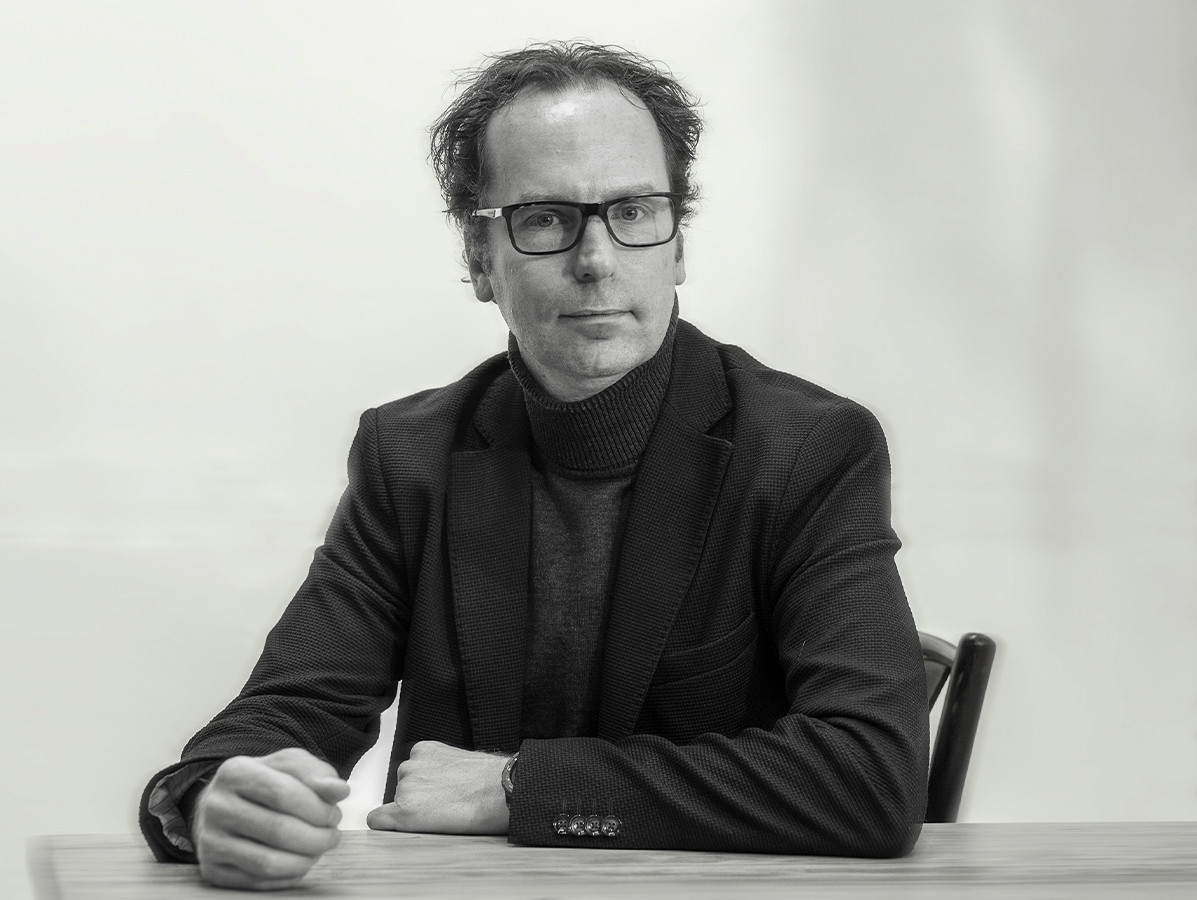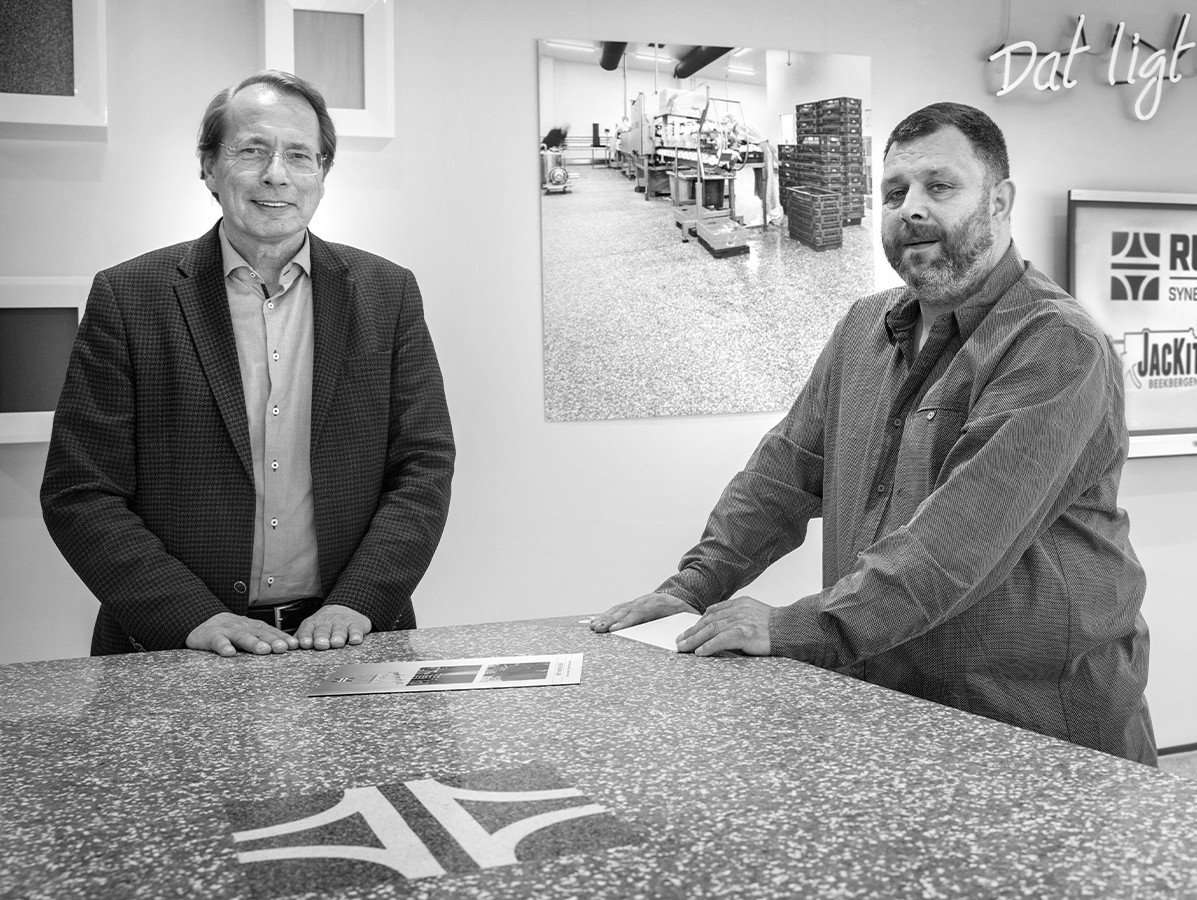
In the food industry, there is always a need for expansion and renovation. Food safety and sustainability requirements become stricter, legislation changes. When you discuss construction and renovation, you cannot avoid the topic of sustainability and circularity. But there are more developments that influence construction. We talked about them with three experts.
'True or false: cold stores and freezer rooms are enormous energy consumers'.
From 2023, every office larger than 100 m3 is required to have energy label C; otherwise it may no longer be sold or let (Energy Agreement 2013). Since last year, new buildings must already comply with the 'Nearly Zero-Energy Building Requirements' (NZEB requirements). These include hard requirements for the isolation of a building as well as an obligation to consider the environmental impact of the materials used. By 2040, the social real estate portfolio in the Netherlands must be completely circular and energy-neutral, and by 2050 construction must be low in CO2 emissions (Climate Agreement 2019).
Anyone who wants to construct a building has to apply for a permit from the municipality. This is going to change with the Act on Quality Assurance for Building. The Act is expected to come into force on 1 January 2023, along with the new Environment Act. In this Act dozens of laws and hundreds of rules are combined into one new law. The intention is to make construction easier, but it will be some time before the law also applies to non-residential construction. "Until then, the current process of applying for permits causes a lot of stress and uncertainty for entrepreneurs", says Hendrik Ruys, director of the Ruys Group - specialist in industrial floors and expert in the realisation of floors in the food industry. "Moreover, finding suitable locations for construction has become increasingly difficult in recent years. That's why entrepreneurs more often choose to renovate and expand at their current location, rather than constructing a whole new building."
What are the important points of attention at the moment with expansions, renovations and new builds? We chat about it with Cordy Volkers, senior project manager and co-owner of Bessels Architekten - total director from plan to realisation, with Jack Pluim, owner of Jackit in Beekbergen - specialising in the complete renovation and replacement of walls and ceilings in the food manufacturing industry, and with Hendrik Ruys.
"A sustainable floor is a floor that lasts for a very long time and whose properties match the way it is used," says Hendrik.
"But sustainable construction can be done in many ways," Cordy adds. "By dealing as efficiently as possible with the scarce space in the Netherlands. By integrating the right systems and automation. By using modular systems that can be disassembled and reused. By installing solar panels on the roof to generate energy. By using residual heat from cooling for office air conditioning. And there is also an increasing number of circular building materials."
"Like Sealwise WCB," says Jack. "This material is completely circular, because it is made of recycled and recyclable PVC. It's not cheap, but it's easily more economical and efficient than tiles or wood-based materials, for example. This is partly due to savings on replacement, maintenance and cleaning." An important reason why he has signed an exclusive cooperation agreement with Sealwise Nederland. Jack also sees more and more sustainable and energy saving measures in his renovation projects: "In Deventer, for example, we worked on a distribution centre for ALDI. The complex installations that ensure that the cooling and freezing cells remain at the right temperature are powered by 8,244 solar panels on the roof. The residual heat from the refrigeration and freezer cells is used to heat the offices."
"In this sustainability discussion, I often hear the criticism that cold stores are huge energy consumers, and therefore not sustainable," Cordy responds. "It is quite the opposite! Sugar beet, apples, meat and fish; everything would spoil much faster if we could not refrigerate or freeze it. By combating food waste, they actually contribute to sustainability. Good isolation is essential for that. A few years ago, I visited a cold store that was more like a winter wonderland. Ice everywhere, beautiful icicles. Of course, that is something you do not want. Once you have ice deposits on your cooler, its efficiency decreases enormously and your energy demand increases significantly. Ice deposits are caused by leaks due to poor crack seals and thermal bridges. The biggest leaks occur at doors and entrances, where you need to install air curtains or high-speed roll doors. In order to locate cracks and seams to enable post-insulation, we use blower-door and thermographic research."

Cordy Volkers (©Negin Zendegani)
In addition to the focus on sustainability, the architect also sees an increase in the attention paid to customer experience, also in and around the building. "For example, a bakery company wanted to be able to take customers into the production process in their new facility and offer them the opportunity to make and taste new products and product compositions directly," Cordy recalls. "The office with Experience Centre was given a central position in the design, providing a good view of the processes in the bakery from there. It is constructed entirely of wood and has been given an internal oasis that functions as the green lung of the building. In front of the entrance, an ecological garden designed as arable land was created. Incidentally, we cannot fulfil all the wishes of clients or local residents. Nature-inclusive and biobased building is easy to fit into an office environment, but sometimes it clashes with the food safety requirements in a food factory. Food safety always comes first.
"That's another reason why I started working with Sealwise," says Jack. " You see, as long as it's in one piece you can't say much about ordinary PVC. But in daily practice there are always scratches on the walls. Dirt can accumulate there. Scientific tests show that viruses and bacteria have no chance at all on Sealwise WCB thanks to the closed cell technology used to make the panels. A method is also applied to the top layer that prevents and eliminates any form of virus and bacteria growth."
'You never know what you're going to find when you're renovating'
Hendrik: "When it comes to hygiene, food safety and anti-slip, every industry has its own specific points of attention. That is why we want to know as much as possible in advance about the processes that take place in the factory. In the meat industry, a factory floor has to be resistant to corrosive substances such as blood and fatty acids. Fish processing involves salt solutions, a lot of water and ice; fruit and vegetable processing can release aggressive juices; and bread and pastry production involves large temperature changes due to ovens and refrigeration. In all sectors, we often see intensive traffic of forklift trucks, pallet trucks and, increasingly, augmented guided vehicles (AGVs). A wear-resistant and strong industrial floor is then indispensable."
"Don't forget the bumpers and wall protection!" responds Jack. "Recently, we installed almost 700 metres of protective edge at Totaalvers in Spijkenisse. This was in addition to the many metres of Ruys stainless steel buffer strips that have been installed there. For optimum wall protection, we even opted for double protection: one at a height of 30 cm and one at 60 cm, to prevent damage to the walls."
Hendrik laughs: "That's right, it has to be foolproof. Employees on forklift trucks don't drive around carefully and with a sense of security. They are too busy speeding up. Where necessary, we therefore connect our impact strips to the structural floor with dowels or anchors. To create an even more solid effect, we pour a special concrete mortar into the construction."
Both Hendrik and Cordy emphasise the importance of sloping floors and placing drains in the right places so that a floor remains puddle-free. "We therefore spend a lot of time in the design phase on the detailing and also, for example, on determining the locations for drains," says Cordy.
Hendrik: "I have noticed that people sometimes underestimate the importance of slope. Or that they think it makes the floor very uneven, when in fact it only involves a few centimetres over a large area. Thanks to more than 45 years of experience, we are able to realise a puddle-free floor with only a 1% slope. Last year we had a client who insisted on no slope in one of his halls. That's because water never comes in there', he said. After a few months, it turned out that he had a problem with water that didn't disappear. Even though it was not our fault, I still felt bad about it. Especially because I allowed myself to be influenced into installing a floor without a slope.
Cordy: "It also contributes to hygiene if you ensure that the 'dirty boys and girls from the TD' have to be on the production floor as little as possible. Therefore, especially in new buildings, we provide a walkable ceiling in the design. This ensures that all cables and pipelines are above the ceiling and that the technical staff can access the installations easily and safely.
A rough floor with anti-slip, or a smooth floor that is easier to clean?
Hendrik: "Yes, these two requirements are sometimes at odds with each other. People's safety is always paramount. If someone slips and breaks an arm, or a pallet truck slides forward one meter, it costs a lot more than the cleaning that takes a little longer. In reality, it appears that 'bactericidal' and 'clean' are two very different things. The lab may say that the room is bacteria-free after testing, but I can still see a floor that is filthy, for example because the foam is not rinsed away properly after cleaning. The floor also loses some of its anti-slip, as a result. The other day I pointed this out to a client, and they really started scrubbing and cleaning. 'Gosh, the floor is much more red than we thought!' he responded."
Before buying a new floor, Hendrik always advises customers to have a look at one of his colleagues' floors, or to ask for their experience, "to see the difference between a floor from us and one from another supplier", he explains. "We can all deliver something beautiful, but it's much more interesting to know what a building or floor looks like after five years of intensive use. One common mistake is that producers often think their staff are cleaner and more careful with forklifts and pallet trucks than their neighbours."
One thing that food producers are not yet seeing much of among their colleagues is jointless dilatation; an innovation that the Ruys Group has only recently brought to the market. "When you connect two buildings, there has to be a bit of space between them; concrete shrinks and expands," he explains. "Now we have developed a material that allows us to make smooth floor transitions, suitable for both horizontal action in terms of shrinkage and expansion, and vertical action in terms of load capacity."

Hendrik Ruys and Jack Pluim (©Koos Groenewold)
In addition to food and labour safety, there is also the fire safety aspect. The Buildings Decree imposes strict requirements on the constructions used in buildings. "Sealwise has fire class B-s1-d0," says Jack: "B constructions are classified as almost non-combustible, s1 means that the construction has a low smoke development and d0 means that the construction does not show any dripping in case of fire." He talks about a project where ordinary PVC panels had been used for a renovation. "During the fire insurance inspection, it turned out that everything had to be replaced. That's when we came into the picture. My tip: don't just look at the current price you pay for a construction or renovation project, but at the total cost of ownership (TCO)."
Jack: "With renovations, you never know what you're going to run into. Recently, we were renovating a pressure-cooler when we discovered that the ceiling had to be replaced as well. You have to be able to adapt quickly. In this sector, you have to understand that the customer has to get on with production and that downtime must be kept to a minimum. For us, that means working on renovation and construction projects at night and on weekends.
Cordy: "I don't like surprises when it comes to construction; an important reason why we, in a multidisciplinary team, put a lot of time into analysis, preliminary research and the technical elaboration. The earlier we can think along with the client, the better we can identify what we should and could do, and what we should not."
'I see that people really listening to each other on the construction site'
Hendrik emphasises the importance of good coordination between the various parties involved in construction projects. "I see that people are really listening to each other more and more, which is a very positive development. Working together early on in the process, helping each other out when necessary, acknowledging each other's professional knowledge and expertise. Daring to make yourself vulnerable, daring to admit what you don't know. It saves a lot of trouble in the long run.
Main photo: ©Blue Planet Studios/Shutterstock.com
Source: Vakblad Voedingsindustrie 2022